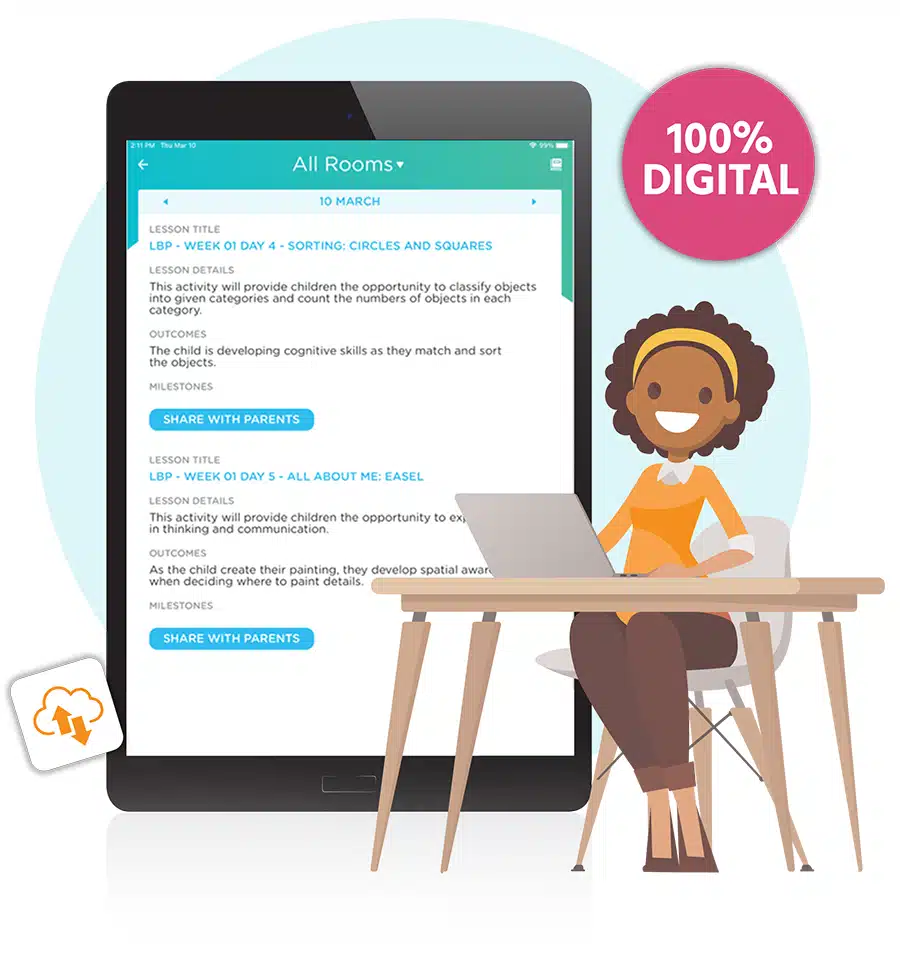Helping preschoolers master sight words is a fundamental step in their literacy development. For teachers at child care centers and preschools, introducing sight words can be a fun and rewarding experience!
Let’s look at five tips for teaching sight words to preschoolers.

1. What are Sight Words? How to Understand Them
Sight words are common words that young children are encouraged to recognize by sight, without having to sound them out.
Sight words are the words that appear most frequently in our reading and writing. Often sight words do not have a concrete image that accompanies them, according to ReadingEggs.com.
They are high-frequency words that may not be able to be pictured, and as such, they simply must be memorized and understood.
These words often appear in everyday reading and writing but don’t always follow standard phonetic rules, making them tricky for beginners. Examples include “the,” “and,” “is” and “it.”
So how are sight words and high frequency words different? High-frequency words are the most commonly occurring words in print, but sight words are words that are recognized “at first sight,” according to Adventures in Literacy Land.
2. Start with a List of Beginner Sight Words
To get started, use a curated sight words list specifically designed for preschoolers.
These beginner sight words are selected based on frequency and simplicity. Words like “a,” “I,” “see” and “like” are perfect for 4-year-olds just starting to learn.
This list of sight words from ABCmouse is a great place to start!
3. Incorporate Sight Word Games and Activities

Engagement is key when teaching sight words. Use interactive games and activities to keep your preschoolers interested. Here are a few ideas:
- Create colorful flashcards with sight words and use them for quick recognition drills.
- Sight word bingo helps children recognize words in a playful setting.
- Hide sight words around the classroom and have the children find and read them for a word hunt!
4. Use Repetition and Consistency
Consistency and repetition are crucial in helping children remember sight words. Integrate these words into daily routines and lessons.
When planning morning circle time activities, start each day by reviewing a few sight words. Engage children in rhyming games where they have to find words that rhyme with a given word. This activity helps develop phonological awareness, a crucial pre-reading skill.
Point out sight words during story reading sessions and encourage children to use sight words in their daily writing activities.
5. Use Visuals and Context

Children learn better when they can see words in context. Pair sight words with images or use them in simple sentences.
Visual aids like word walls or picture books that highlight sight words can be incredibly effective.
How a Digital Curriculum Designed for ECE Can Help!

Teaching sight words to preschoolers doesn’t have to be a daunting task. By understanding what sight words are, starting with a manageable list, incorporating fun activities, using repetition and providing context, you can make the learning experience both effective and enjoyable for your young learners.
For help teaching literacy and more to young learners, consider a curriculum designed for young learners.
Procare Early Learning powered by Learning Beyond Paper is an all-digital early childhood curriculum specifically designed to meet the unique needs of educating children from infancy through pre-kindergarten.
The curriculum is embedded into Procare, making it easier and less time-consuming for busy teachers and administrators to provide high-quality education.
With Procare Early Learning powered by Learning Beyond Paper, child care centers can:
- Equip teachers with state-of-the-art online curriculum at their fingertips
- Dramatically reduce the amount of time spent on lesson planning each week
- Offer children a high-quality, developmentally appropriate curriculum
- Save money with this cost-efficient solution that’s integrated with Procare
This curriculum can be used in ALL child care center classrooms, with 52 weeks of lesson plans and thousands of daily activities for infants, toddlers, preschoolers and pre-kindergarteners. Learning areas include STEAM, language and literacy, physical development, cognitive, music and movement as well as interactive reading. Plus, teachers get tips and tools.
Procare is the only solution that can deliver the entire early childhood education ecosystem — lesson planning, lesson delivery within the classroom as well as assessment and parent engagement. Being able to do all of these with one platform simplifies classroom management and planning!
How much time and money could your child care center save using a digital curriculum designed for young learners? Enter your number of staff, number of students and type of program into our online calculator to see your potential time and money savings!



